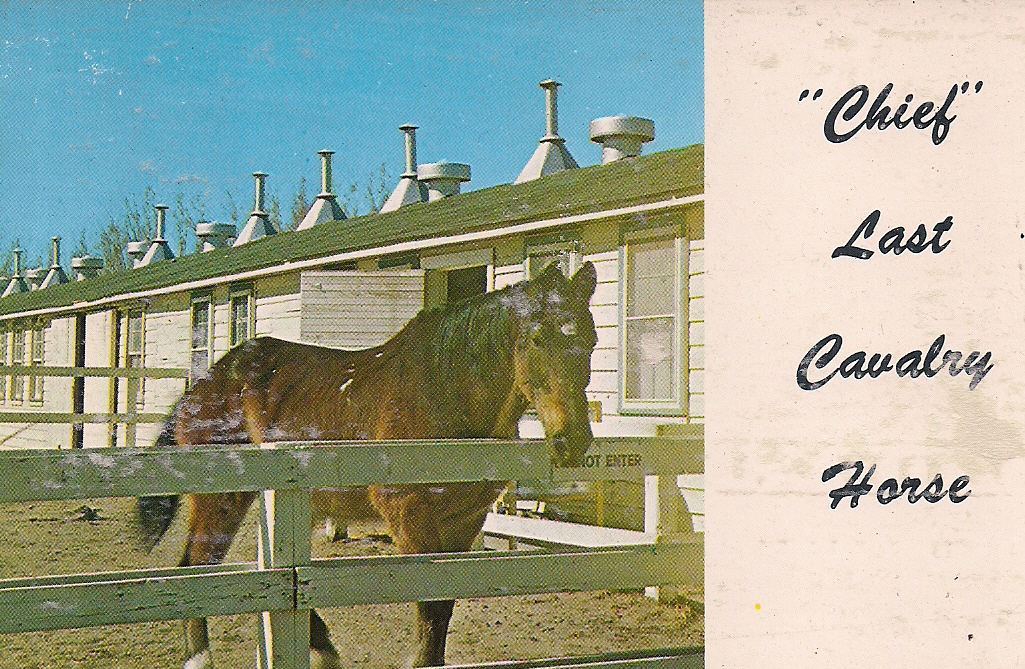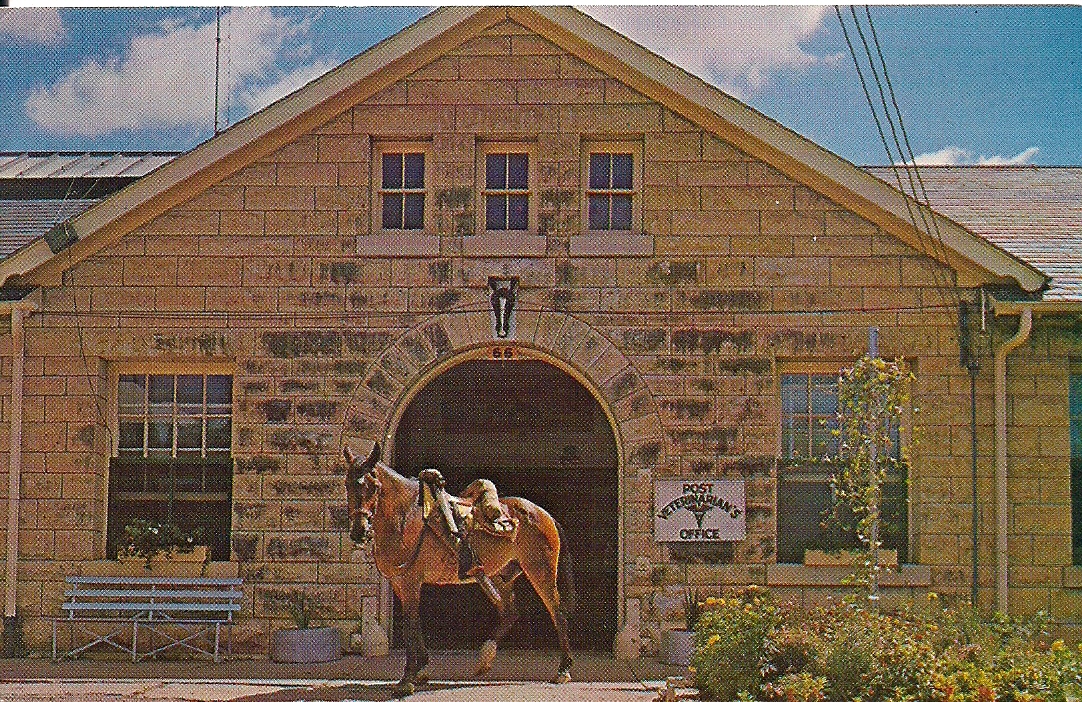.jpg) The Last Cavalry Horse
The Last Cavalry Horse
By Rickey Robertson
Everyone who lived during the large scale Louisiana Maneuvers of 1941 remember many things of this great event, such as the long convoys of trucks and tanks, long columns of marching infantry units, little grasshopper airplanes that could land in your hay field, large camps and bivouac sites filled with tents and soldiers, but the one thing everyone talks about is the mounted horse cavalry. During the Louisiana Maneuvers 2 full cavalry divisions, both the 1st and 2nd Cavalry Divisions, plus several other cavalry regiments operated throughout the Sabine Maneuver Area. It was common to see a long dusty cavalry column coming by for what seemed like hours , with the long columns of mounted cavalry traveling day and night, often stopping only to water their mounts. Residents remember seeing the cavalry horses in column with feed bags on their muzzles, eating oats and corn as they traveled. Many rural people tell of catching soldiers in their corn cribs trying to get additional corn for their mounts. The mounted cavalry trooper took care of his mount before he took care of his own needs. His most valuable piece of military equipment was his horse.
With the mounted units being used to and fro during the maneuvers, horses became sick and many were injured. The Quartermaster Section brought to Louisiana a re-mount section with over 800 replacement cavalry mounts ready for use, along with several hundred mules. The remount section was set up on the west south west side of Peason Ridge near present day Jett Road near Hornbeck, La. All these horses and mules were broke and ready for use. Each cavalry mount went through basic training when the Quartermaster Remount Section purchased them. They knew every move and turn, and yes, they knew every bugle call and knew just what to do when they heard the call ! And the big Missouri pack and artillery mules were trained in carrying heavy loads such as artillery field pieces, but they were also broke to ride! The artillerymen and mule packers could ride the animals if they were not carrying needed equipment. But something new was taking place in the U.S. Army. With the arrival of tanks, half-tracks, and other armored vehicles, the cavalry was to be phased out. It couldn't happen, but yes it did. The famous cavalry regiments that had been mounted since the days of the Civil War, the Indian Wars, and up to 1941were about to have to turn in their famous mounts.
By the end of the Louisiana Maneuvers, the beloved cavalry mounts were being traded for mechanized vehicles. To the cavalryman, his mount was more dependable than a motor vehicle. A veteran cavalryman could saddle and place his equipment on his mount and be in formation in less than 3 ½ minutes. The mounted units of the U.S. Army had performed magnificently during the maneuvers but were being displaced by the fast mechanized units. As the units left the Louisiana Maneuver area in-route back to their home bases, at the Courthouse Square in Newton, Texas many of the units began disbanding and turning in their beloved horses.
But as these units turned in their horses, the US Army Quartermaster Section began selling off all the cavalry horses 16 years old or younger. All the other older mounts were shipped to Fort Riley, Kansas where they were put out to pasture on that base. Over the years these horses slowly died off until there was only one original cavalry horse left in the US Army inventory and on its rolls. Chief, a big bay gelding, was the last cavalry horse living at Fort Riley. Chief had been foaled in 1932 and in 1940 he had been purchased by government purchasing agents as a re-mount for $163.00. He was brought into the service at Fort Robinson, Nebraska and after his initial breaking and training was assigned to the 10th US Cavalry Regiment at Fort Riley, Kansas in late 1940. Chief was one of 6000 cavalry mounts that arrived at Fort Riley to be assigned to the various units and cavalry troopers. After the disbanding of the mounted cavalry units, 3 were kept on active duty at Fort Riley, with Chief being one of these. He was semi-retired in 1949 and was fully retired in early 1958 as the last living cavalry mount. Sadly on May 26, 1958 Chief, the last cavalry horse, passed away. Chief had lived to be 36 years old, which in human years is 108 years of age. A special funeral and burial took place for Chief at Fort Riley. A special coffin was made for Chief, and he was placed standing up in it. The Commanding General of Fort Riley gave a speech and remarks about Chief and his service to the US Army. With the US Army Band playing "Boots and Saddles ", the funeral procession carried Chief to his gravesite. If you have ever been to Fort Riley there is a large statue of a mounted cavalryman located there nicknamed Old Trooper by some and Old Bill by others . In honor of his faithful service to the US Army and to the nation, Chief was buried at the foot of this statue and his gravesite is visited each and every day by visitors to this location. But is there any remnant of these magnificent cavalry horses left in existence ? Yes there is, right here in Sabine, Vernon, and Natchitoches Parishes!
There is still a large wild horse herd on Peason Ridge Military Reservation. The ancestors of these horses were horses and mules that were used in the large scale logging operations from 1917 to 1935, were horses who were left by the settlers and homesteaders of Peason Ridge when the US Army used imminent domain to take their farms and homesteads from them in 1941, and yes, many of the ancestors were cavalry mounts that had been turned loose as sick or lame by the Remount Sections, and some that had just escaped from the Remount Sections during the maneuvers. As you view these wild horses, you can see the blood lines of the cavalry horses of World War II in them. Many of the cavalry mounts, sick or lame, along with some who escaped, mixed with the wild horses roaming the Peason area and their descendants still roam freely throughout the area. You can look at these horses and can immediately tell which of these animals had an ancestor as a cavalry horse. So we may not have any living cavalry horses on the government rolls, but we still have their ancestors who will always remind us of these magnificent horses!
 Photograph of Chief, the last cavalry horse in the US Army. (Rickey Robertson Collection).
Photograph of Chief, the last cavalry horse in the US Army. (Rickey Robertson Collection).

Chief, with full cavalry equipment, standing in front of the Fort Riley Veterinarian Office. (Rickey Robertson Collection).

Mounted Military Policemen patrolled Camp Polk La. (Rickey Robertson Collection).

Cavalry trooper with his faithful mount during the Louisiana Maneuvers of 1941. (Rickey Robertson Collection).

A group of the wild horse herd located on Peason Ridge. You can see the blood lines of the cavalry mounts in these horses. (Rickey Robertson Collection).